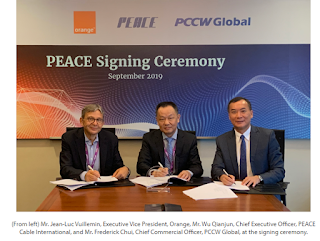NTT DOCOMO has commenced deployment of a 4G/5G multivendor radio access network conforming to O-RAN specifications.
Working in collaboration with Fujitsu, NEC, and Nokia, DOCOMO has demonstrated multi-vendor interoperability across a variety of 4G and 5G base station equipment compatible with O-RAN. The O-RAN standards include fronthaul specifications and X2 profile specifications.
O-RAN fronthaul specifications are used to establish the connections between centralized units hosting baseband processing and remote units hosting radio processing in 5G remote-installed base stations. O-RAN fronthaul interface specifications provide a foundation for interoperability between centralized units and remote units of 5G remote-installed base stations manufactured by diverse partners.
The O-RAN X2 profile specifications provide a foundation for interoperability between 4G base stations and 5G base stations manufactured by diverse partners in 5G non-standalone (5G NSA) networks by taking 3GPP X2 interface specifications and specifying detailed standards for their usage. 5G NSA networks connect devices using both 4G and 5G technologies.
DOCOMO believes this represents the world's first realization of this level of multi-vendor interoperability in 4G and 5G base station equipment conforming to O-RAN specifications. The ability to deploy and interconnect base station equipment from different vendors will make it possible to select the equipment most suitable for deployment in any given environment, such as base stations offering broad coverage in rural areas or small base stations that can be deployed in urban areas where space is limited.
DOCOMO will deploy the equipment in the pre-commercial 5G service it plans to launch on September 20, 2019 in Japan.
https://www.nttdocomo.co.jp/english/info/media_center/pr/2019/0918_00.html
Working in collaboration with Fujitsu, NEC, and Nokia, DOCOMO has demonstrated multi-vendor interoperability across a variety of 4G and 5G base station equipment compatible with O-RAN. The O-RAN standards include fronthaul specifications and X2 profile specifications.
O-RAN fronthaul specifications are used to establish the connections between centralized units hosting baseband processing and remote units hosting radio processing in 5G remote-installed base stations. O-RAN fronthaul interface specifications provide a foundation for interoperability between centralized units and remote units of 5G remote-installed base stations manufactured by diverse partners.
The O-RAN X2 profile specifications provide a foundation for interoperability between 4G base stations and 5G base stations manufactured by diverse partners in 5G non-standalone (5G NSA) networks by taking 3GPP X2 interface specifications and specifying detailed standards for their usage. 5G NSA networks connect devices using both 4G and 5G technologies.
DOCOMO believes this represents the world's first realization of this level of multi-vendor interoperability in 4G and 5G base station equipment conforming to O-RAN specifications. The ability to deploy and interconnect base station equipment from different vendors will make it possible to select the equipment most suitable for deployment in any given environment, such as base stations offering broad coverage in rural areas or small base stations that can be deployed in urban areas where space is limited.
DOCOMO will deploy the equipment in the pre-commercial 5G service it plans to launch on September 20, 2019 in Japan.
https://www.nttdocomo.co.jp/english/info/media_center/pr/2019/0918_00.html
Fujitsu delivers 5G base station products to NTT DOCOMO
Fujitsu Limited has begun delivery of 5G base station products, comprising of Central Unit (CU, 1) and Radio Unit (RU, 2), to NTT DOCOMO for its commercial 5G network.
The 5G CU products that Fujitsu has started delivering realize the 5G system through a proprietary software design from the company using software-defined radio technology, which can implement different wireless technologies on the same hardware.
The 5G RU products have built-in antennas (which had conventionally been installed externally) equipped with beam forming, enabling efficient network deployments. These RU products have a lineup consisting of 3 types of equipment that support 5G frequencies (the 3.7 GHz band, the 4.5 GHz band, and the 28 GHz band). he products are compliant with the O-RAN fronthaul interface specifications. Using this open interface, Fujitsu's products can connect to various vendors CU/RU products. The products also support 3GPP's (Release 15) specifications.
Fujitsu said it has been working with NTT DOCOMO to develop a CU and RUs that comply with the O-RAN fronthaul interface specifications
The 5G CU products that Fujitsu has started delivering realize the 5G system through a proprietary software design from the company using software-defined radio technology, which can implement different wireless technologies on the same hardware.
The 5G RU products have built-in antennas (which had conventionally been installed externally) equipped with beam forming, enabling efficient network deployments. These RU products have a lineup consisting of 3 types of equipment that support 5G frequencies (the 3.7 GHz band, the 4.5 GHz band, and the 28 GHz band). he products are compliant with the O-RAN fronthaul interface specifications. Using this open interface, Fujitsu's products can connect to various vendors CU/RU products. The products also support 3GPP's (Release 15) specifications.
Fujitsu said it has been working with NTT DOCOMO to develop a CU and RUs that comply with the O-RAN fronthaul interface specifications



















